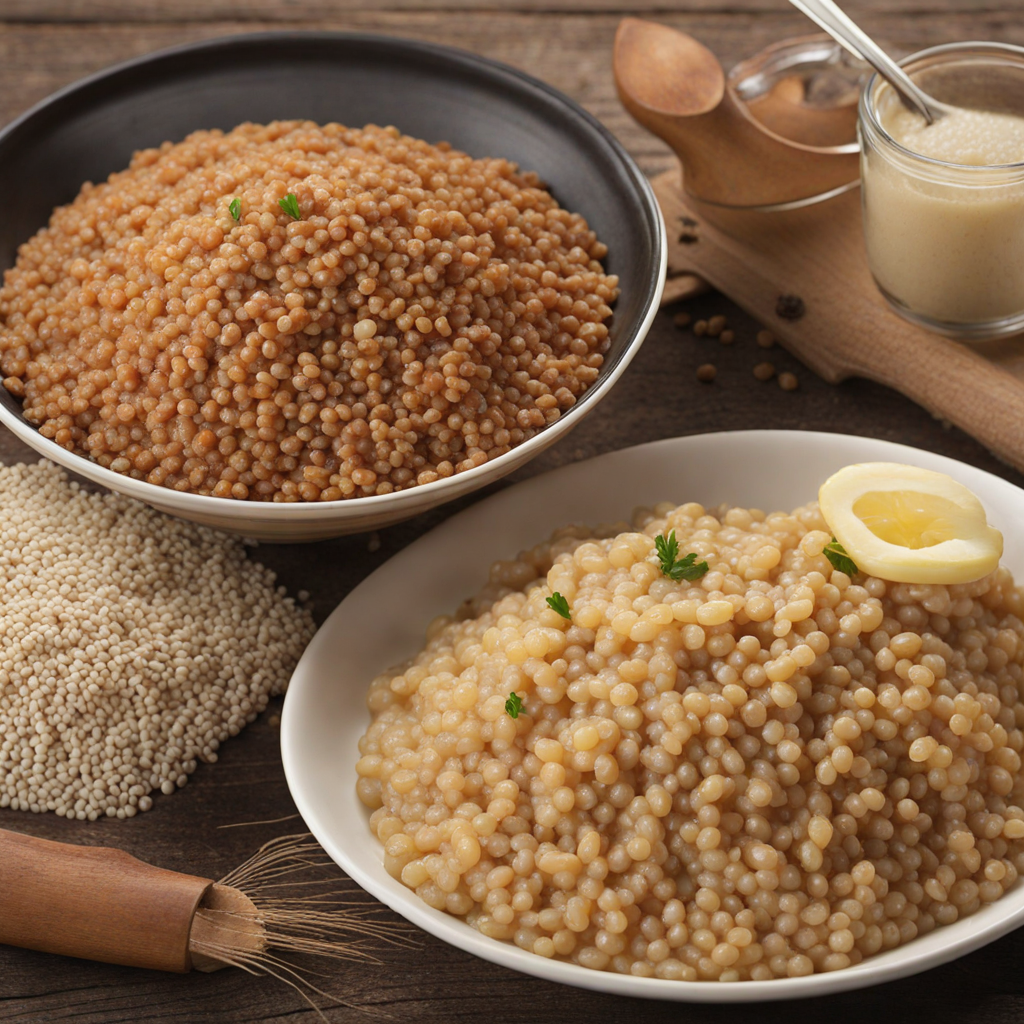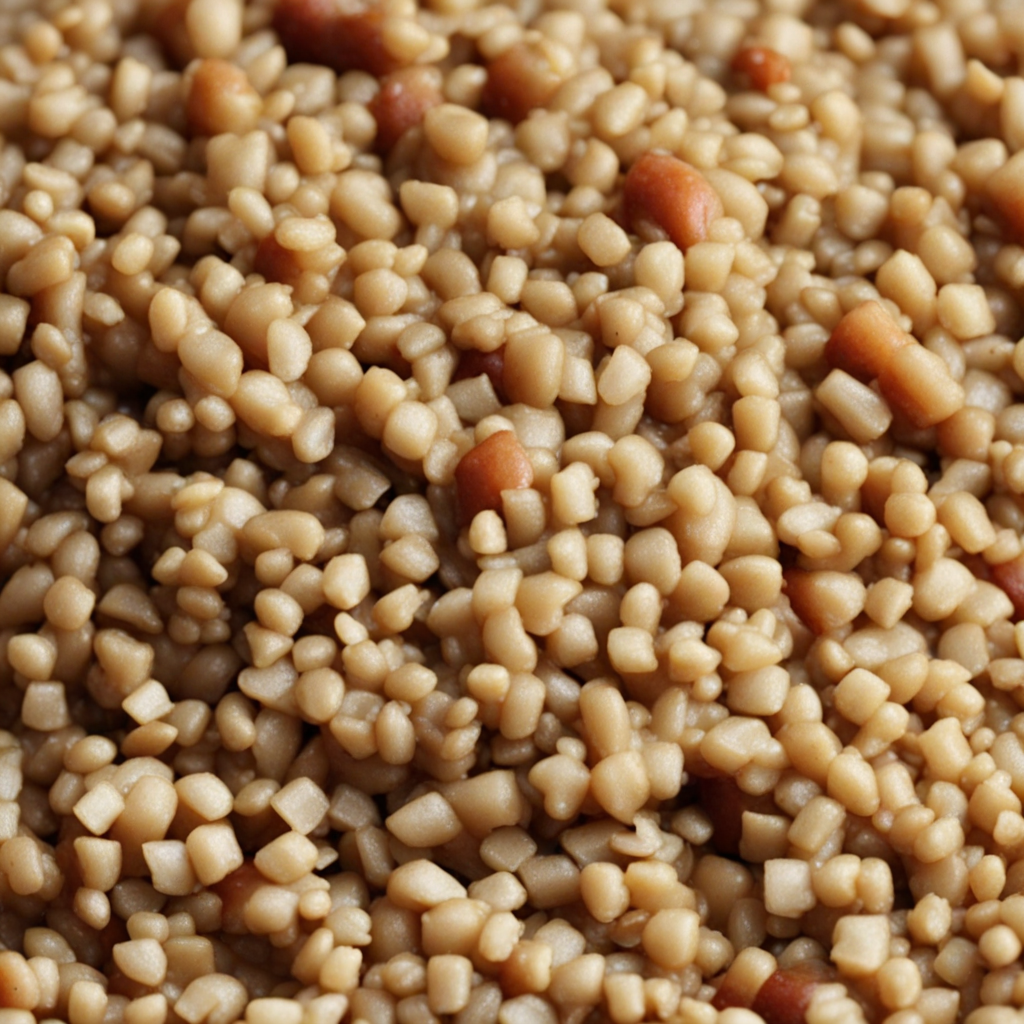Kasza
Kasza is a traditional Polish dish that comprises various types of groats made from grains such as buckwheat, barley, millet, and oats. These grains have been staples in the Polish diet for centuries and are celebrated for their nutritional value, versatility, and ability to complement a wide range of meals. The history of kasza can be traced back to the agricultural communities of Eastern Europe, where grains were a vital source of sustenance. Over time, kasza became more than just a food item; it evolved into a cultural symbol of Polish cuisine, often associated with rustic, home-cooked meals that evoke a sense of comfort and tradition. The flavor of kasza varies depending on the type of grain used. Buckwheat kasza, known as "kasza gryczana," has a nutty, earthy taste with a slightly chewy texture, making it a popular choice among health-conscious consumers. Barley kasza, or "kasza jęczmienna," is slightly sweeter and boasts a tender texture, while millet kasza, called "kasza jaglana," has a mild, slightly sweet flavor. Each type of kasza brings its unique characteristics to dishes and can be seasoned in various ways to enhance its natural flavors. When prepared correctly, kasza serves as a hearty base that absorbs flavors from accompanying ingredients, making it an excellent canvas for flavorful sauces, vegetables, and proteins. Preparation of kasza is relatively straightforward, though it can vary slightly depending on the type of grain.
How It Became This Dish
The History of Kasza: Poland’s Culinary Treasure #### Origins of Kasza Kasza, a term that encompasses various forms of grain dishes in Poland, has roots deeply embedded in the country’s agricultural history. The word 'kasza' itself is derived from the Old Slavic term for porridge, which hints at its ancient origins. While the exact timeline is difficult to pinpoint, evidence suggests that the consumption of grains dates back to the early Slavic tribes, who relied heavily on agriculture for sustenance. The primary grains used for kasza include buckwheat, barley, millet, and rye, reflecting the diverse agricultural landscape of Poland. Buckwheat kasza, known locally as "kasza gryczana," is particularly popular and is often associated with the country's rural heritage. The cultivation of these grains was essential for Polish peasants, providing not just food but also an element of cultural identity. #### Cultural Significance Kasza holds a significant place in Polish culinary tradition, often seen as a comfort food that evokes memories of home and family. It is more than just sustenance; it is a symbol of resilience and adaptability. As Poland faced various historical challenges—from invasions and partitions to wars—kasza remained a staple, nourishing generations and adapting to the economic realities of the time. In Polish households, kasza is often prepared in a variety of ways: served as a side dish, mixed with vegetables, or incorporated into soups. Its versatility makes it a beloved ingredient, and it is often paired with hearty meats, stews, or served as a filling for pierogi. The communal aspect of preparing and sharing kasza is also significant; it brings families together, representing warmth and hospitality. Moreover, kasza features prominently in Polish festivities and rituals. It is often served during Christmas Eve dinners (Wigilia) and other significant gatherings, reflecting its importance in cultural celebrations. The grain's central role in traditional meals highlights the connection between food and cultural heritage, as it ties together generations through shared recipes and memories. #### Development Over Time As Poland evolved through the centuries, so did the preparation and perception of kasza. During the Middle Ages, the dish gained prominence among peasants due to its affordability and nutritional value. The rise of the nobility saw a shift in culinary practices, with more elaborate dishes emerging. However, kasza remained a staple across all social classes, valued for its simplicity and nourishing qualities. The 19th century marked a period of significant change for Poland, characterized by various political upheavals and economic transformations. As cities expanded and industrialization took hold, traditional agricultural practices began to wane. Nonetheless, kasza retained its place in Polish cuisine, as urban dwellers sought comfort in familiar flavors. It became a symbol of national identity during a time of struggle, with many Poles turning to their culinary roots as a form of resistance against foreign rule. The interwar period brought about a renewed interest in Polish cuisine, including kasza. Renowned chefs and food writers began to celebrate traditional dishes, often emphasizing the health benefits of whole grains. This era saw the introduction of buckwheat kasza as a health food, praised for its high nutritional value, gluten-free nature, and rich flavor. As a result, it became a darling of the burgeoning health movement, leading to its popularity in both traditional and modern Polish kitchens. The aftermath of World War II saw further changes in Poland’s food landscape, as the communist regime imposed a more uniform approach to agriculture and food production. This period saw a decline in artisanal and regional variations of kasza, as state-run farms focused on high-yield crops. However, the nutritional importance of kasza remained recognized, ensuring its continued presence in Polish diets. #### Contemporary Kasza: A Revival In recent years, there has been a resurgence of interest in traditional foods, including kasza. As the world embraces health-conscious eating and the farm-to-table movement gains momentum, many Poles are rediscovering the virtues of this humble grain. Today, kasza is celebrated not only for its nutritional benefits but also for its versatility in modern cooking. Chefs and home cooks alike are experimenting with kasza, finding innovative ways to incorporate it into contemporary dishes. From kasza salads to grain bowls, its adaptability allows for creative culinary expressions while still honoring its traditional roots. The rise of vegan and vegetarian diets has further propelled kasza into the spotlight, as it serves as an excellent source of plant-based protein and fiber. Moreover, the global interest in Polish cuisine has led to an increased appreciation for kasza among international audiences. Food festivals, cooking classes, and online platforms have introduced this cherished grain to a broader audience, showcasing its potential beyond the borders of Poland. As a result, kasza is becoming a culinary ambassador for Polish culture, bridging the gap between tradition and modernity. #### Conclusion Kasza is more than just a dish; it is a testament to the resilience of Polish culture and culinary heritage. From its ancient origins to its contemporary revival, this beloved grain continues to nourish and unite people across generations. Its significance transcends mere sustenance, representing a connection to history, community, and identity. As Poland looks toward the future, kasza remains a symbol of hope and continuity, a reminder of the land’s rich agricultural legacy and the enduring spirit of its people. Whether served in a traditional setting or reimagined in modern cuisine, kasza will undoubtedly continue to occupy a cherished place in the hearts and kitchens of Poles for generations to come.
You may like
Discover local flavors from Poland







